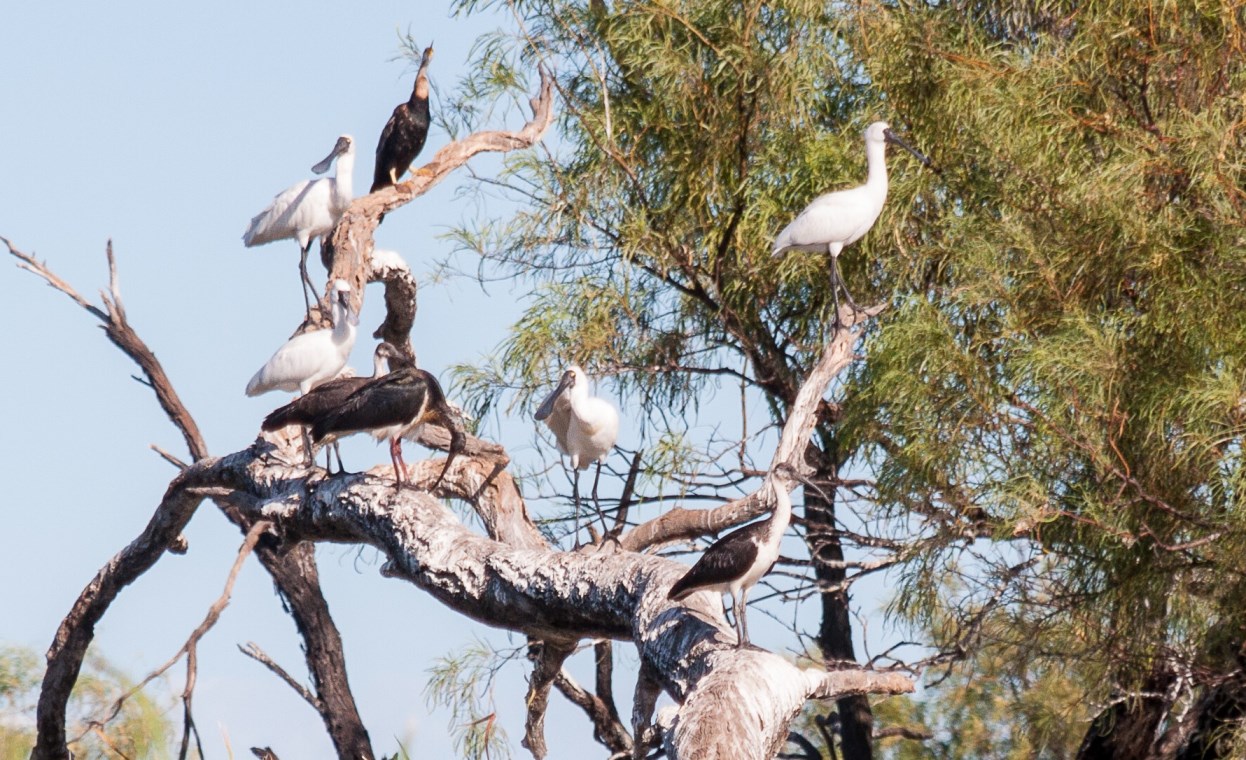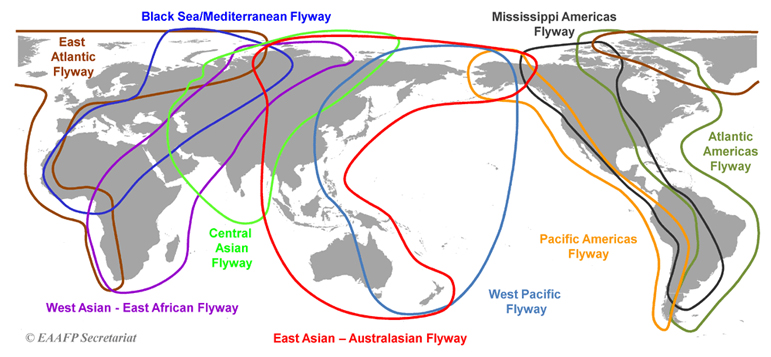Habitat
A habitat is the kind of natural environment in which a particular group of species or organisms live. A species' habitat is those places where they can find food, shelter, protection and mates for breeding. It has both physical and biological features that encourage a particular group to populate that area. The physical factors are for example the soils, rainfall and water, range of temperatures and light intensity. The biological factors would include the availability and variety of foods, structures like plants to live in and the presence or absence of predators.
Every organism has certain habitat needs for the conditions in which it will thrive, but some are tolerant of wide variations while others are very specific in their requirements. In our wetlands and wet places of our region, many native species have adapted to cope with the natural cycles of wet and the dry they have experienced over many generations and time.
Habitats naturally change over time. This may be due to a large scale event like a violent storm, large scale flooding or a bushfire; or the change may be more gradual over millennia with alterations in the climate and as different weather patterns bring changes of rainfall, temperatures and solar radiation.
Other changes come as a direct result of human activities; the diversion and damming of rivers which alters to natural cycle and volume of river flows, the removal of habitat by land clearing, ploughing and draining wetlands for agriculture. The introduction of feral species can have a devastating effect on native wildlife, through habitat destruction by feral pigs, predation by cats and foxes or through the introduction of pests and diseases to which the native species have no immunity.
Source: Daryl Albertson/OEH
Waterbird habitat
Many bird species rely on wetlands in NSW for all or part of their life cycle. Waterbirds can use a range of different wetland habitats including our rivers, swamps, lagoons, lakes, floodplain wetlands and dams. Waterbirds use a range of wetland habitats each of which provides a range of different food types. This provides opportunities for different waterbird species, with many specialising in being either fish-eaters, plant eaters and foragers, or invertebrate feeders. Fish-eating birds include some of the larger waterbirds such as pelicans, cormorants, herons, egrets and grebes. Deep open water attracts diving plant-eaters such as black swans. Grazing waterfowl such as magpie geese, Australian wood ducks and plumed whistling ducks are often found roosting on grassy banks of a wetland, and reeds and rushes provide cover for shoreline foragers including crakes, rails and swamphens. Mudflats and shallow water are rich feeding areas for invertebrate feeders include large waders such as spoonbills and ibis; and small waders such as stilts, dotterels and sandpipers.

Source: Daryl Albertson/OEH
Major rainfall events in inland NSW can cause widespread flooding and a large increase in waterbird numbers. Spring and summer flooding stimulates high levels of productivity in these ephemeral wetlands, providing a boom in crustaceans, molluscs, aquatic plants, insects, fish and frogs which waterbird species can exploit. The abundance of food provide ideal conditions for breeding in many waterbirds, including waterfowl and colonial-waterbird species. The breeding response of many species has developed in response to the natural flooding regime of inland river systems. The size, timing and duration of flooding, and the rate of fall of water levels in a wetland are all important factors – either individually or in combination – for influencing the success and magnitude of breeding. Some species are respond very quickly to storm, rainfall and flooding events, moving large distances overnight to newly flooded habitats.
Our inland wetlands therefore provide important habitats for waterbird species, and at least 50 species depend on wetlands in the region for breeding. Some waterbird species, for example, glossy ibis, freckled duck and blue-billed duck are thought to breed almost entirely within wetlands of the inland basin. During large floods, the internationally significant Gwydir Wetlands, Macquarie Marshes and Narran Lakes support some of the largest breeding colonies of straw-necked ibis, intermediate egret and rufous night heron in southern Australia.
Source: Daryl Albertson/OEH
The loss of wetland habitats and destruction of our wetlands is a concern because they are some of the most productive habitats on the planet. They often support high concentrations of animals—including mammals, birds, fish and invertebrates—and serve as nurseries for many of these species. Ultimately they are unique habitats that are relied upon by many native species for their long term survival on our planet. It is therefore critical that the threats posed by habitat loss, reduced water flows and feral species be addressed for the long term survival of these important, special wet places and their waterbird species.
The World Wildlife Fund (WWF), international governments and other organizations have pursued efforts to conserve and protect wetlands for more than 40 years through the Ramsar Convention, the only international treaty devoted to a single ecosystem type. More than 476,000 acres of wetlands worldwide have been protected through this treaty, saving them and their services for future generations.
NSW has 12 Ramsar wetlands which have been established in recognition of their international importance to wetland-dependant species such as waterbirds. For many sites this includes migratory species, which migrate annually between their breeding grounds in the Northern Hemisphere and non-breeding habitat in Australia. They travel via the East Asian–Australasian Flyway to breed in Alaska, Siberia, Mongola, Northern China or Japan. These species undertake continuous flying between stop-over sites and so need safe places to rest and refuel enroute. It is often the wet places of our region that serve as stopover points, for these migratory species on their travels, to and from their breeding grounds.

Map source: EAAFP Secretariat